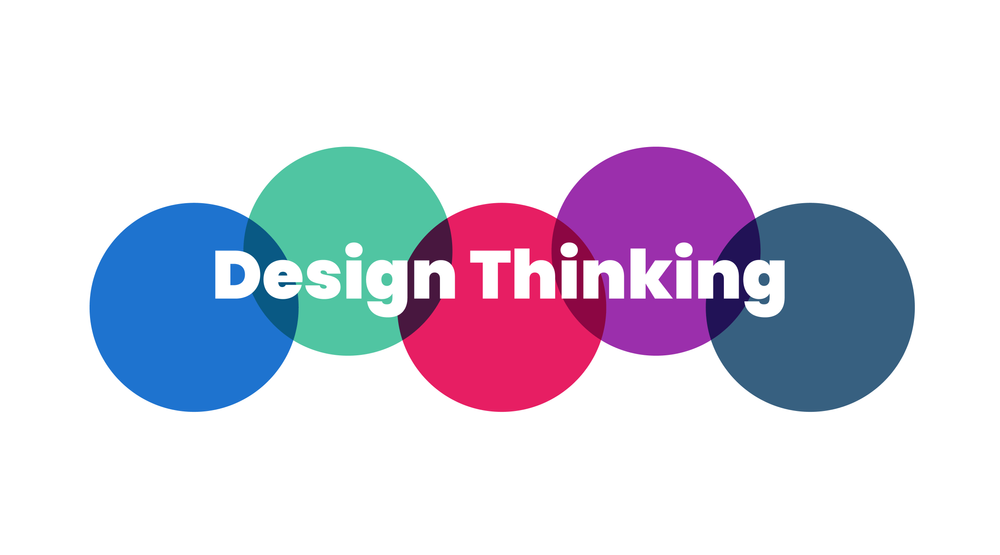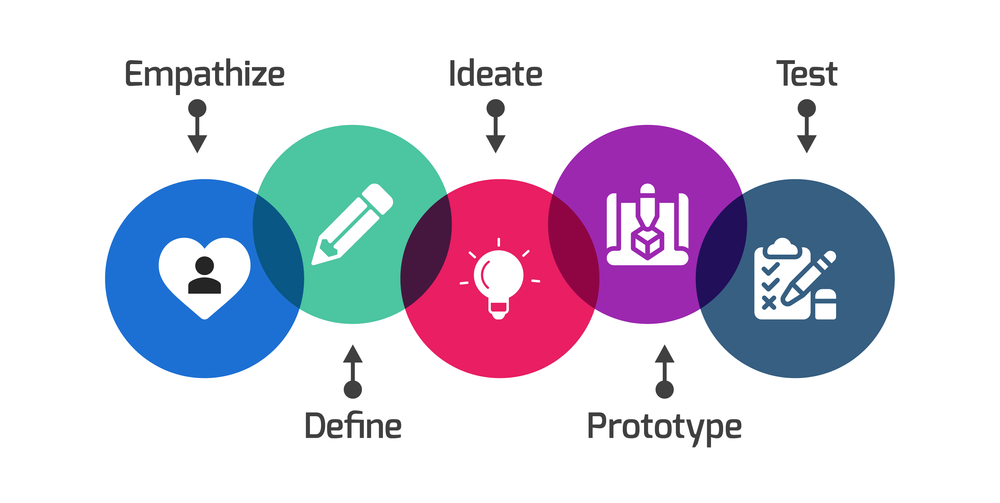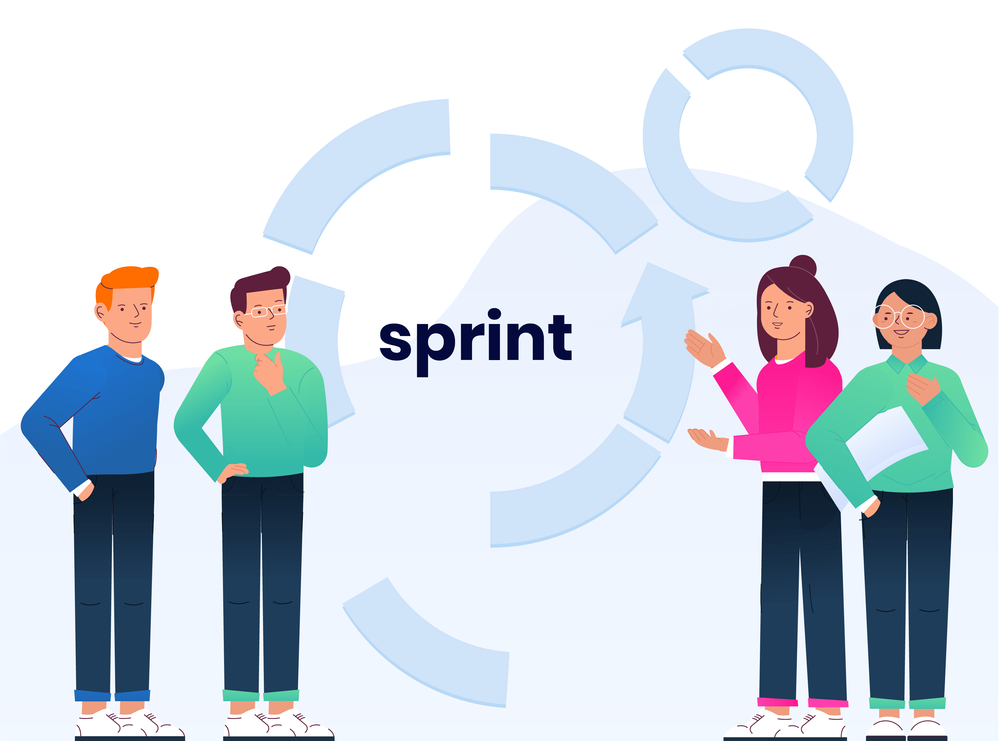How to use design thinking to shape your sprint strategy

Sometimes, a tech company calls itself ‘successful’ if it can get a product idea to market before anyone else. Unfortunately, as innovation and speed became key priorities, some companies lost focus on what is really important for businesses to thrive: the customers themselves.
Thankfully, the industry is shifting back to creating what their customers want and need. Enter design thinking, an ideology that’s been adopted by Google, Apple, Samsung and more.
So why have these tech giants switched gears? And what makes design thinking such an impressive idea that it’s taught in classrooms at Harvard, MIT and Stanford University? Let’s find out what it is, what the stages and principles are, and how design thinking can improve the Agile workflow.
What is design thinking — and how does it fit in Agile?
Design thinking is an iterative process that keeps the user at its heart. It encourages a holistic view, accepts that uncertainty is always present during development, and helps to consider every angle of a problem to come up with creative ideas.
No matter what you’re developing or what issues you’re trying to solve, design thinking asks you to look from an outside perspective. By incorporating empathy into development, you can build products that truly leave the end user happy with their experience. Don’t forget: without customer satisfaction your product will fail.
When presented with the design thinking approach, some could be concerned that output levels will dip. However, by merging Agile methodologies with design thinking, you can still have a consistent output level and increase the chances of the customer’s first impression being a positive one.
While design thinking isn’t exactly an Agile way of working, the two methodologies complement each other well.
Where Agile requires user engagement to gain product feedback, design thinking shows you how to put it into practice: building feedback into iterative improvement.
The 5 stages of design thinking

The design thinking process is commonly split up into five distinct stages. We’ll explore these five stages below, from the perspective of a product that’s already in development.
If you want to read up on the five stages of design thinking in ideation and early concept development, take a look at our guide here.
Step 1: Empathize
Empathy is crucial to a human-centered design process like design thinking. It allows the team to put aside their own assumptions and gain valuable insight from real-life end users.
There are a couple of ways to do this.
The first is fairly standard: talk to your target users and learn what they want or need from the product. As design thinking is a problem-solving technique, ask them to recreate the steps they took that triggered the problem in the first place. Users typically have tons of valuable information tucked away — insights they didn’t even realize they had to offer, coming from a perspective you may not have considered.
Another way to build empathy is by immersing yourself in the user experience. Take some time with the product and use it like the end user will use it. Putting yourself in their shoes will help you understand their journeys, their struggles, and their needs. You’ll experience what they feel and how they react, giving you the context you need to fix the issue.
Step 2: Define
In order to fix problems, you first need to identify them. The empathize phase will have given you a wealth of information to work with, but no clear definition of what is working and what needs improvement.
As you look through the research data, you will soon see patterns emerging — indicating the problem areas. Chances are you won’t be able to resolve every issue right away, so identify and prioritize the improvements with highest value to your customer (as is the design thinking way.)
Again, there are many ways to tackle the definition stage. You could try affinity grouping, dot voting or a traditional idea board.
No matter which method you choose, you’ll be able to complete the definition stage quickly and easily with one of EasyRetro’s templates.
Step 3: Ideate
You know the problems that need addressing, now it’s time to figure out how to solve them. It would be great if every problem had a simple solution — but that’s not always (read: never) the case. That means your team will have to come up with a creative fix. And the best way to find that is a good, old fashioned ideation session.
You’ll need to gather as many ideas as possible to start off with. Using a brainstorming session (or whichever ideation method you prefer), you can gain lots of ideas from your team and plenty of insight into the team’s next steps.
Once the ideas have been gathered, evaluate each idea as a team. Decide which ideas to leave behind and which ideas the team will move forward with.
Step 4: Prototype
If you’re following the design thinking method to a T, then the design team will now produce scaled-down versions of the product or feature to assess which best solves the problem. These low-cost prototypes will help you develop multiple solutions at once — rather than trying each option one by one (we’re working agilely here, right?).
The team will experiment with the different ideas that came out of the ideation stage. Each prototype will provide a realistic representation of the solution that allows you to understand what works, and what doesn’t.
The prototype can be improved over time as feedback comes in from the testing stage.
Step 5: Test
This is where everything starts to come together. Prototypes are shared and tested with users outside of the team. Similar to the first stage, you’ll need to gather feedback from your end users. This time, they’ll have the prototype to explore, rather than highlighting issues in your product.
By the end of the final stage, your design team will have impartial feedback from a variety of demographics. Not only will that give you the best solution to the problem you’re facing, but it’ll give you even more valuable information on how people will use your product.
The entire process can be repeated as many times as necessary until the best solution has been found.
Why use design thinking in Agile sprints?
It’s a common misconception that Agile methods sacrifice customer satisfaction, in favor of speed and flexibility. To that end, clients may prefer to use a company that follows Agile in order to fast-track their projects and lose sight of the customer experience. However, the two methodologies can work in harmony — offering high customer satisfaction via a fast, efficient workflow.
By incorporating design thinking early in the process, your team can gather insights from real end users. Those insights will help them to focus on what the customer needs — and that can improve satisfaction, reduce risk, and lower the need for expensive redesigns later in development.

Implement design thinking into your sprint team
Worried about gaining buy-in from the rest of your Agile team?
“Hybrid sprints” are a great way to combat the team’s concerns and integrate design thinking. A hybrid sprint embeds the design thinking steps into a sprint format, offering a familiar structure for your Agile team. They’ll also be able to see how design thinking meaningfully connects user needs to business objectives — and no one can deny the value in that!
The design thinking mindset can be implemented within any stage of your project, too. As your team is already working in a flexible, Agile fashion, the transition shouldn’t be too difficult to manage. Even before shipping new features to market, teams that integrate design thinking and Agile practices can capture valuable, real-time feedback from the end users.
Design thinking and Agile: differing ideologies that thrive in unison
You may have thought that design thinking and agile working were mutually exclusive, but that couldn’t be further from the truth. Integrating the two can result in higher customer satisfaction without sacrificing output levels.
Agile and design thinking methods both contain similar principles and frameworks. And both methods have defined sets of roles and activities.
When thoughtfully applied, the two approaches can help teams deliver brilliant solutions that bring value to the end user and deliver real commercial results.
Of course, a flexible team needs tools that adapt as fast as you do. EasyRetro’s user-friendly platform helps you brainstorm, build idea boards, undergo dot voting sessions, and so much more. We have a huge library of templates that can be customized in just a couple of clicks and our blog is full of valuable guides such as this one.
And better still, we get Agile.
We’ve helped teams improve in more than 2,000,000 retrospectives, so why not let us help you too? Come join the EasyRetro family today with our free plan, or unleash your team’s potential with a free trial of our premium packages.